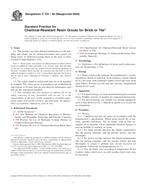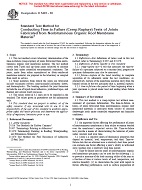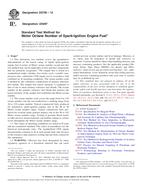1.1 This guide establishes a process for the determination of acceptable surface operating conditions for heated systems. The human burn hazard is defined, and methods are presented for use in the design or evaluation of heated systems to prevent serious injury from contact with the exposed surfaces.
1.2 The maximum acceptable temperature for a particular surface is derived from an estimate of the possible or probable contact time, the surface system configuration, and the level of injury deemed acceptable for a particular situation.
1.3 For design purposes, the probable contact time for industrial situations has been established at 5 s. For consumer products, a longer (60-s) contact time has been proposed by Wu (1) and others to reflect the slower reaction times for children, the elderly, or the infirm.
1.4 The maximum level of injury recommended here is that causing first degree burns on the average subject. This type of injury is reversible and causes no permanent tissue damage. For cases where more severe conditions are mandated (by space, economic, exposure probability, or other outside considerations), this guide may be used to establish a second, less desirable injury level (second degree burns), where some permanent tissue damage can be permitted. At no time, however, are conditions that produce third degree burns recommended.
1.5 A bibliography of human burn evaluation studies and surface hazard measurement is provided in the list of references at the end of this guide (1-16).
1.6 This standard does not purport to address all the safety problems, if any, associated with its use. It is the responsibility of the user of this standard to establish appropriate safety and health practices and determine the applicability of regulatory limitations prior to its use.
Product Details
- Published:
- 03/10/1999
- Number of Pages:
- 8
- File Size:
- 1 file , 86 KB


